Article: “Invasion, Theft, Rape, Murder: The Aboriginal Holocaust in Tasmania”
BY RUNOKO RASHIDI*
DEDICATED TO TRUGANINI
![390919_10150387983506222_702611221_8780289_524994641_n[1]](http://atlantablackstar.com/wp-content/uploads/2014/03/390919_10150387983506222_702611221_8780289_524994641_n1.jpg)
To many, the mention of Tasmania evokes humorous recollections of the Tasmanian devil–the voracious marsupial popularized in American cartoons. But, I assure you, there is a much more harsh reality for Tasmania. Tasmania is an island slightly larger in size than West Virginia, and is located two-hundred miles off Australia’s southeast coast. The aboriginal inhabitants of the island were Black People who probably went there by crossing an ancient land bridge that connected Tasmania to the continent of Australia.
The first people of Tasmania, known as Palawa, were marked by tightly curled hair, with skin complexions ranging from black to reddish-brown. They had broad noses, wide mouths, and deep-set brown eyes. They were relatively short in stature with little body fat. They were the indigenous people of Tasmania and their arrival there began at least 35,000 years ago. With the passage of time, the gradual rising of the sea level submerged the Australian-Tasmanian land bridge and the Black aborigines of Tasmania experienced more than 10,000 years of solitude and physical isolation from the rest of the world.
EUROPEANS IN TASMANIA
The isolation of Tasmania’s original people ended in 1642 with the arrival and intrusion of the first Europeans. Abel Jansen Tasman, the Dutch navigator after whom the island is named, anchored off the Tasmanian coast in early December 1642. Tasman named the island Van Diemen’s land, after Anthony Van Diemen–the governor-general of the Dutch East India Company. The island continued to be Called Van Diemen’s Land until 1855.
On January 28, 1777, the British landed on the island. Following coastal New South Wales in Australia, Tasmania was established as a British convict settlement in 1803. These convicts had been harshly traumatized and were exceptionally brutal. In addition to soldiers, administrators, and missionaries, eventually more than 65,000 men and women convicts were settled in Tasmania.
![376360_10150388019276222_702611221_8780344_1550873611_n[1]](http://atlantablackstar.com/wp-content/uploads/2014/03/376360_10150388019276222_702611221_8780344_1550873611_n1.jpg)
TASMANIAN DEVILS IN HUMAN FORM
As early as 1804 the British began to slaughter, kidnap and enslave the Black people of Tasmania. The colonial government itself was not even inclined to consider the aboriginal Tasmanians as full human beings, and scholars began to discuss civilization as a unilinear process with white people at the top and Black people at the bottom. To the Europeans of Tasmania, the Blacks were an entity fit only to be exploited in the most sadistic of manners–a sadism that staggers the imagination and violates all human morality.
Not a single European, however, was ever punished for the murder of Tasmanian Aborigines. Europeans thought nothing of tying Black men to trees and using them for target practice. Black women were kidnapped, chained and exploited as sexual slaves. White convicts regularly hunted Black people for sport, casually shooting, spearing or clubbing the men to death, torturing and raping the women, and roasting Black infants alive.
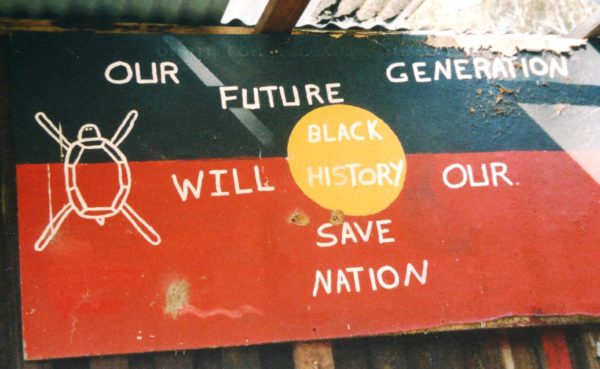
THE BLACK WAR OF VAN DIEMEN‘S LAND
The Black War of Van Diemen’s Land was the name of the official campaign of terror directed against the Black people of Tasmania. Between 1803 and 1830 the Black aborigines of Tasmania were reduced from an estimated 5,000 people to less than 75.
With the declaration of martial law in November 1828, whites were authorized to kill Blacks on sight. Although the Blacks offered a heroic resistance, the wooden clubs and sharpened sticks of the Aborigines were no match against the firepower, ruthlessness, and savagery exercised by the Europeans against them. In time, a bounty was declared on Blacks, and “Black catching,” as it was called, soon became a big business; 5 pounds for each adult Aborigine, 2 pounds for each child.
After considering proposals to capture them for sale as slaves, poison or trap them, or hunt them with dogs, the government settled on continued bounties and the use of mounted police.
After the Black War, for political expediency, the status of the Blacks, who were no longer regarded as a physical threat, was reduced to that of a nuisance and a bother, and with loud and pious exclamations that it was for the benefit of the Blacks themselves, the remainder of the Aborigines were rounded up and placed in concentration camps.
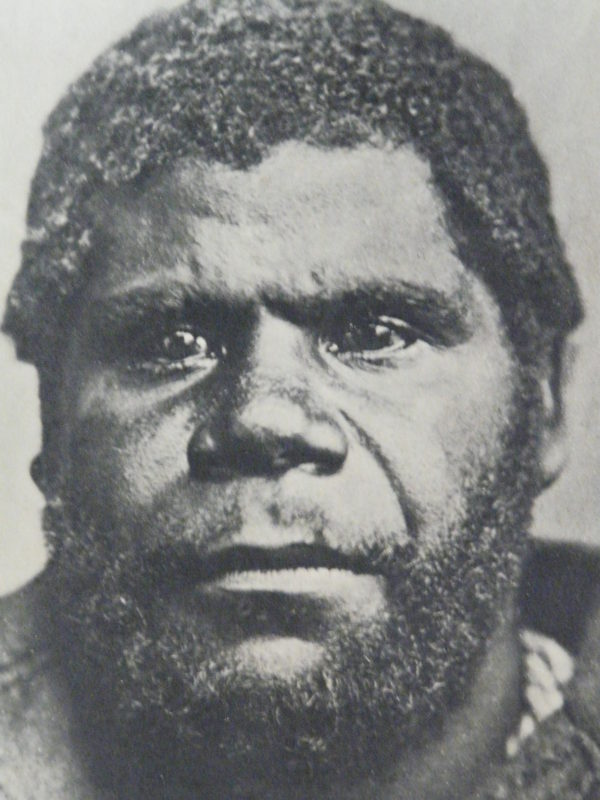
THE LAST TASMANIANS
With the steady decrease in the number of Aborigines, white people began to take a bizarre interest in the Blacks, whom whites believed “to be a missing link between humans and apes.”
In 1859 Charles Darwin’s book, On the Origin of Species, popularized the fantasy of biological (and therefore social) evolution, with whites at the top of the evolutionary scale and Blacks at the bottom, the Aborigines were portrayed as a group of people “doomed to die out according to a natural law, like the dodo, and the dinosaur.” This is during the same period in the United States that it was legally advocated that a Black man had no rights that a white man was bound to respect.
William Lanney, facetiously known as King Billy, was the last full-blood male Tasmanian. He was born in 1835 and grew up on Flinders Island. At the age of 13, Lanney was removed with the remnant of his people to a concentration camp called Oyster Cove. Ultimately he became a sailor and some years he went whaling. As the last male Tasmanian, Lanney was regarded as a human relic. In January 1860 he was introduced to Prince Albert. He returned ill from a whaling voyage in February 1868, and on March 2, 1868, he died in his room at the Dog and Partridge public-house in Hobart, Tasmania.
Lanney, the subject of ridicule in life, became, in death, a desirable object. Even while he lay in the Colonial Hospital at least two persons determined to have his bones. They claimed to act in the interest of the Royal Society of Tasmania. On March 6, 1868, the day of the funeral, 50 or 60 residents interested in Lanney gathered at the hospital. Rumors were circulating that the body had been mutilated and, to satisfy the mourners, the coffin was opened. When those who wished to do so had seen the body, the coffin was closed and sealed.
Meanwhile it was reported that, on the preceding night, a surgeon had entered the dead-house where Lanney lay, skinned the head, and removed the skull. Reportedly, the head of a patient who had died in the hospital on the same day was similarly skinned, and the skull was placed inside Lanney’s scalp and the skin drawn over it. Members of the Royal Society were “greatly annoyed” at being thus forestalled and, as body-snatching was expected, it was decided that nothing should be left worth taking and Lanney’s hands and feet were cut off. In keeping with the tradition, no one was punished. William Lanney, the last Black man in Tasmania, was gone.
TRUGANINI: THE LAST FULL BLOOD TASMANIAN
 On May 7, 1876, Truganini, the last full-blood Black person in Tasmania, died at 73 years of age. Her mother had been stabbed to death by a European. Her sister was kidnapped by Europeans. Her intended husband was drowned by two Europeans in her presence, while his murderers raped her.
On May 7, 1876, Truganini, the last full-blood Black person in Tasmania, died at 73 years of age. Her mother had been stabbed to death by a European. Her sister was kidnapped by Europeans. Her intended husband was drowned by two Europeans in her presence, while his murderers raped her.
It might be accurately said that Truganini’s numerous personal sufferings typify the tragedy of the Black people of Tasmania as a whole. “Don’t let them cut me up,” she begged the doctor as she lay dying. After her burial, Truganini’s body was exhumed, and her skeleton, strung upon wires and placed upright in a box, became for many years the most popular exhibit in the Tasmanian Museum and remained on display until 1947.
Finally, in 1976–the centenary years of Truganini’s death–despite the museum’s objections, her skeleton was cremated and her ashes scattered at sea.
CONCLUSION: TASMANIAN ABORIGINALS TODAY
In 1998 I was invited to come to Australia
![250px-Truganini_and_last_4_tasmanian_aborigines_edit[1] (2)](http://atlantablackstar.com/wp-content/uploads/2014/03/250px-Truganini_and_last_4_tasmanian_aborigines_edit1-2.jpg)
and in November 1998 a dream came true when I spoke at the World’s Indigenous Peoples Conference in Toowomba, Southern Queensland, Australia. I considered it a truly great honor. During my Australian sojourn, in addition to the conference, I was able to travel to several regions and three states.
For the first time I interacted with large numbers of Aboriginal Australians. The conference itself was magnificent; a real triumph and one of the great experiences of my life. Even before the conference convened, however, I was shocked to meet for the initial time a Black man from Tasmania. He was professor Errol West of the University of Southern Queensland. West (a noted scholar and an excellent poet who is an ancestor now) and I quickly developed a close bond and became good friends.
We talked and socialized together a great deal and it became readily apparent that only the full-blood Blacks had perished in the holocaust, and that there were Black people living in Tasmania today.
In August 2004, I went to Tasmania itself where I actually met with some of the survivors of the European storm. I talked with them and cried with them. And I went to Oyster Cove, a cold and grim clearing in the woods on the edge of the water where remains of some of the Tasmanian Aboriginals were kept. It felt to me like I could look out of the corners of my eyes and see Tasmanian Aboriginals looking at me from just beyond the trees. It was an emotional, uncomfortable, and almost frightening experience. And I went to the Tasmanian Museum in Hobart and actually stood next to the very spot where Truganini’s body was kept on display for such a very long time. It was an experience that I will never forget. Indeed, as I always say now, “Always remember and never forget.” That expression, in essence, typifies the legacy of the Tasmanian Aboriginals. Always remember, never forget.
*Runoko Rashidi is a noted historian and anthropologist based and the author or editor of numerous scholarly works, including Black Star over Europe in 2011 and African Star over Asia in 2012. He is also a world traveler and is the coordinator of numerous group tours, including four scheduled for 2014. For more information visit www.travelwithrunoko.com or email him at Runoko@hotmail.com
WAR AGAINST THE TASMANIAN ABORIGINALS: A BIBLIOGRAPHY
Chauncy, Nan. Hunted in Their Own Land. Introduction and Afterword by Barbara Bader. New York: Seabury Press, 1973.
Davies, David. The Last of the Tasmanians. New York: Barnes & Noble, 1974.
Diamond, Jared. “Ten Thousand Years of Solitude.” Discover 14, No. 3 (Mar 1993): 48-57.
McMahon, Anne. “Tasmanian Aboriginal Women as Slaves.” Tasmanian Historical Research Association, Papers and Proceedings 23, No. 2 (1976)
Price, Pat Peatfield. The First Tasmanians. New York: Rigby, 1984.
Reynolds, Henry. Fate of a Free People: A Radical Re-Examination of the Tasmanian Wars. Baltimore: Penguin, 2004.
Turnbull, Clive. Black War: The Extermination of the Tasmanian Aborigines. Introduction by Ian Hogbin. 1948; rpt. Melbourne: Lansdowne Press, 1965.



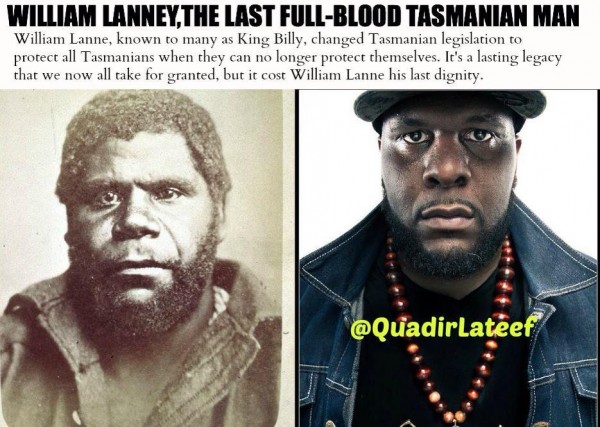
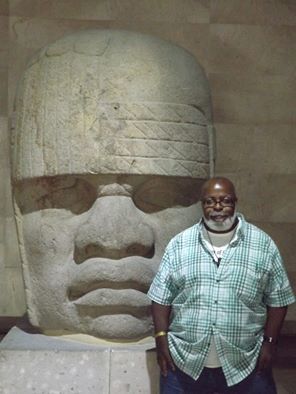

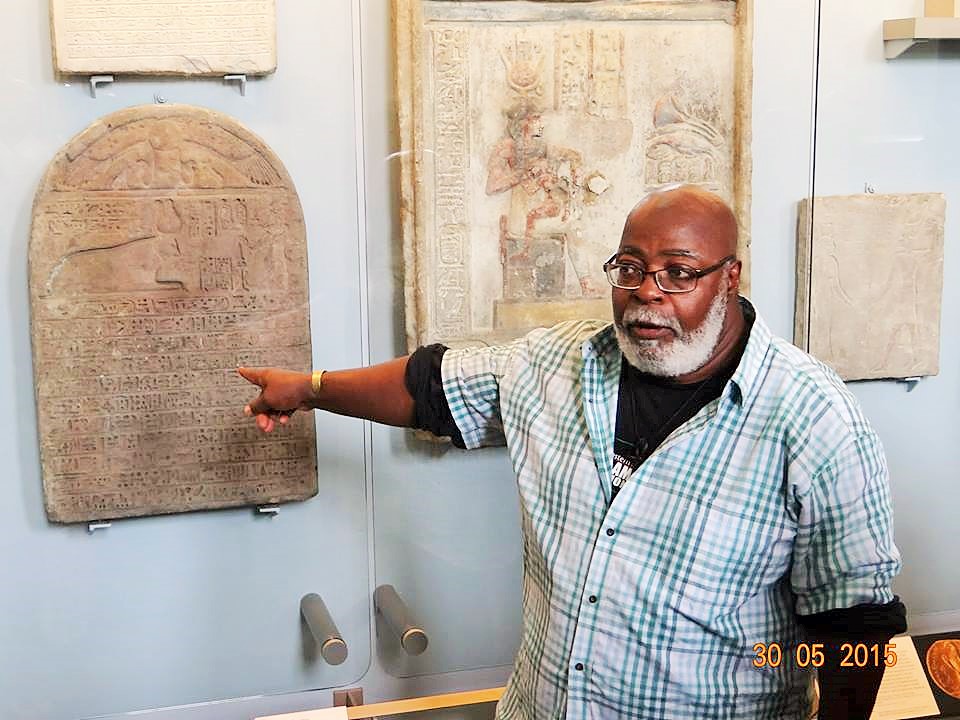
I was both educated and saddened by this excellent article “War Against the Tasmanian Aboriginals.” Dr. Runoko Rashidi has chronicled the tragic history of the Tasmanian people such that it won’t be lost forever!!
Thank you for sharing brother Runoko.
I would like to have on radio D’Leon when you are in Amsterdam.